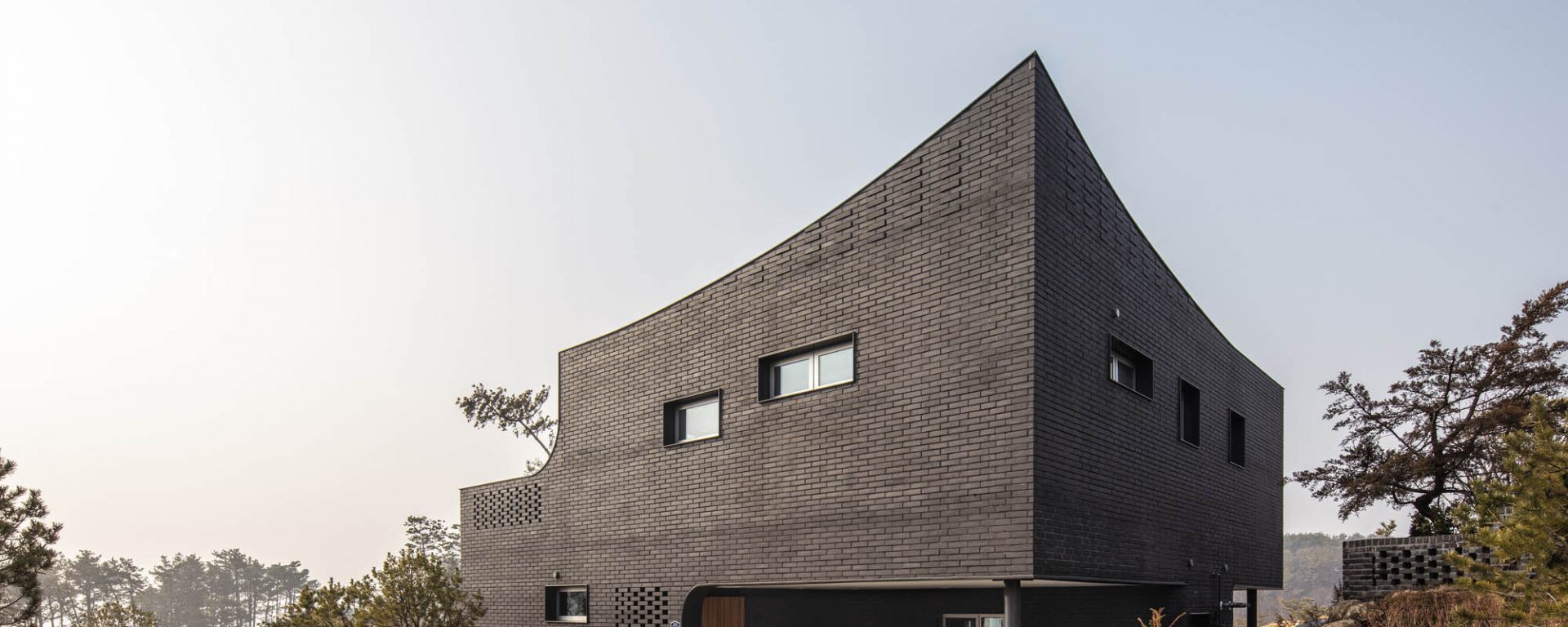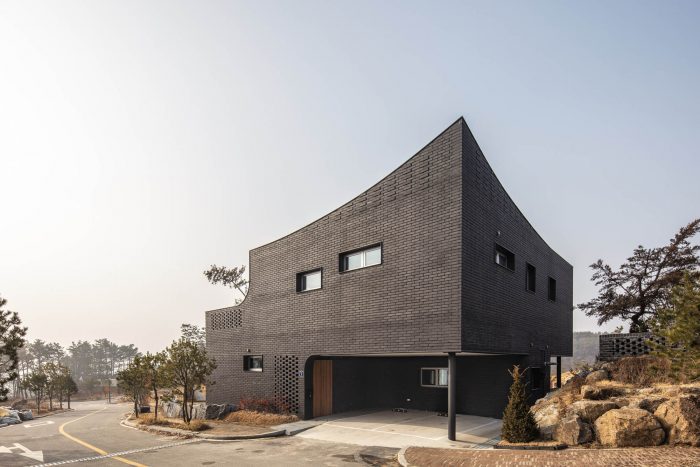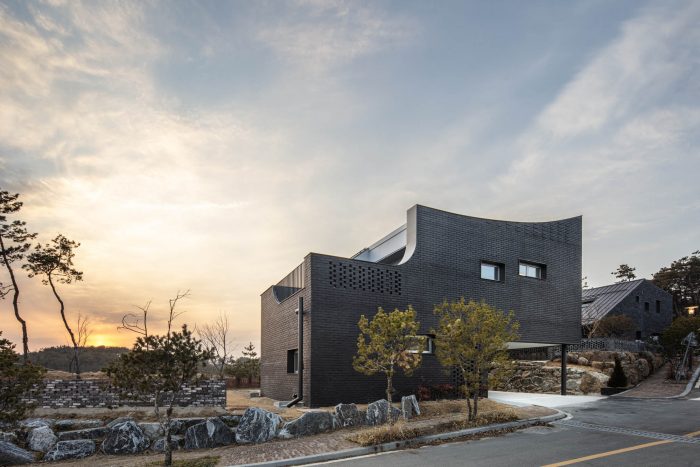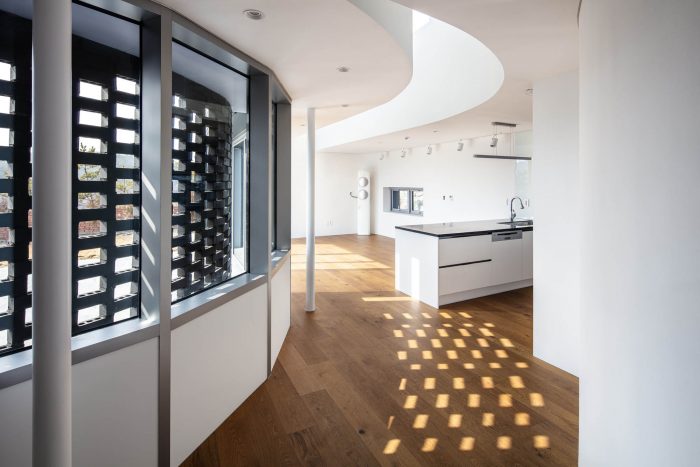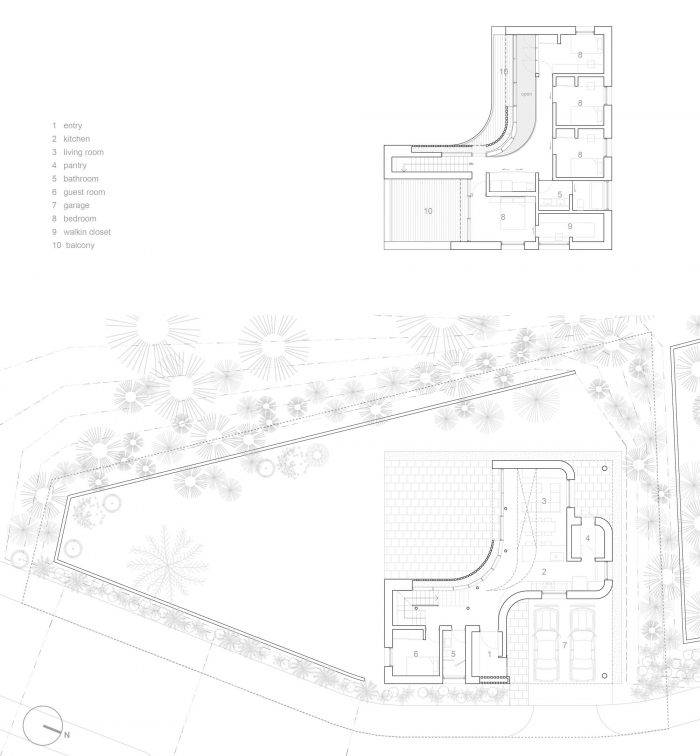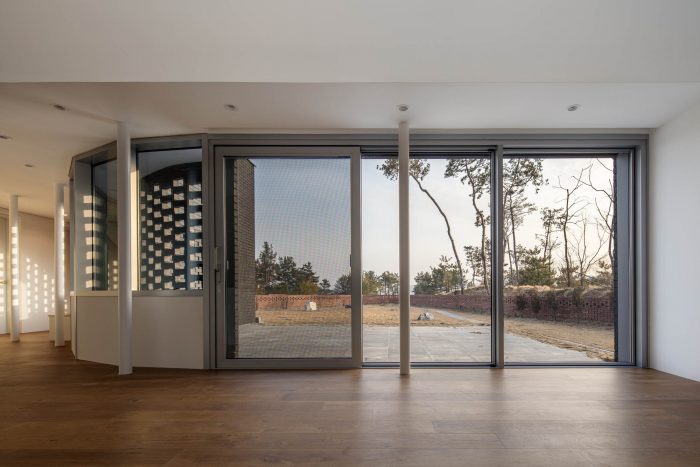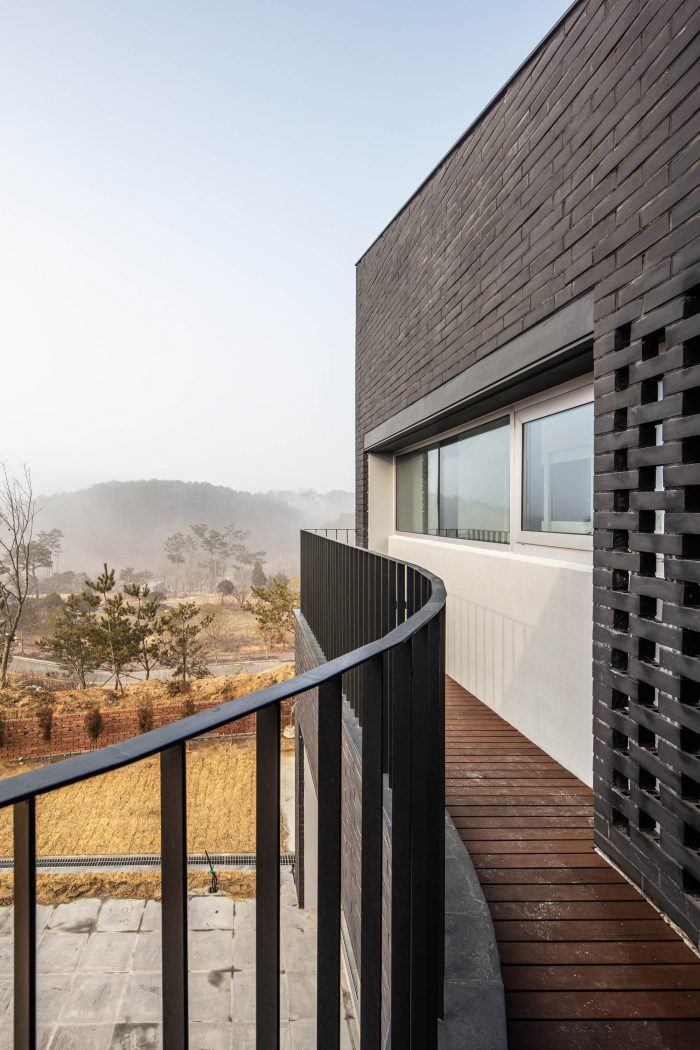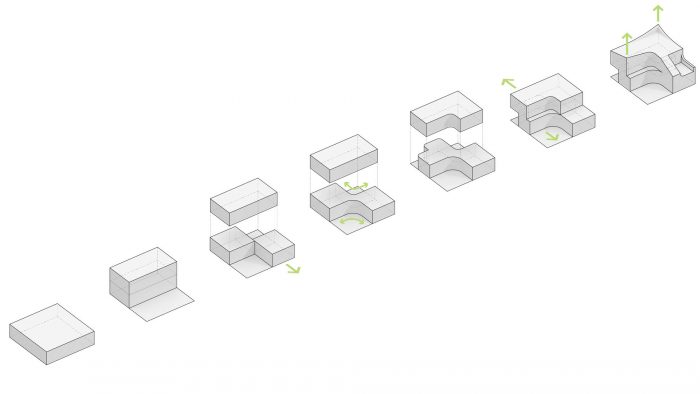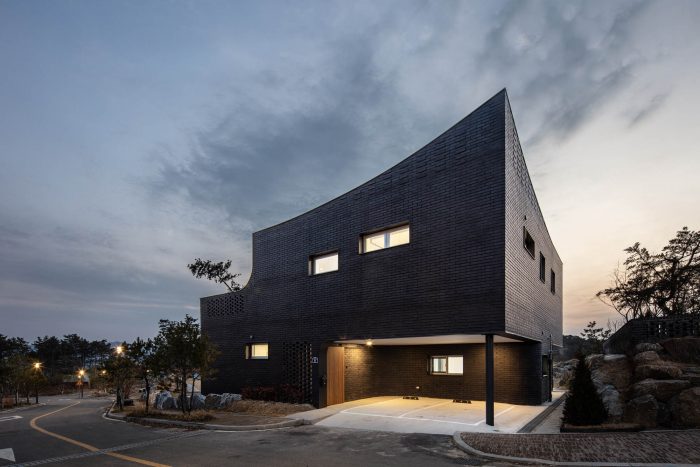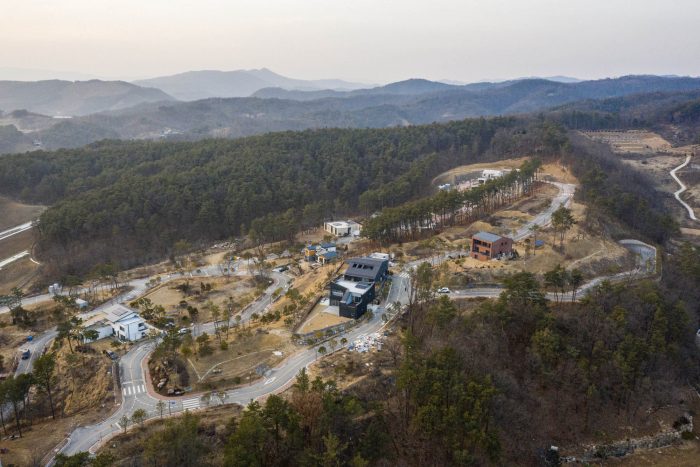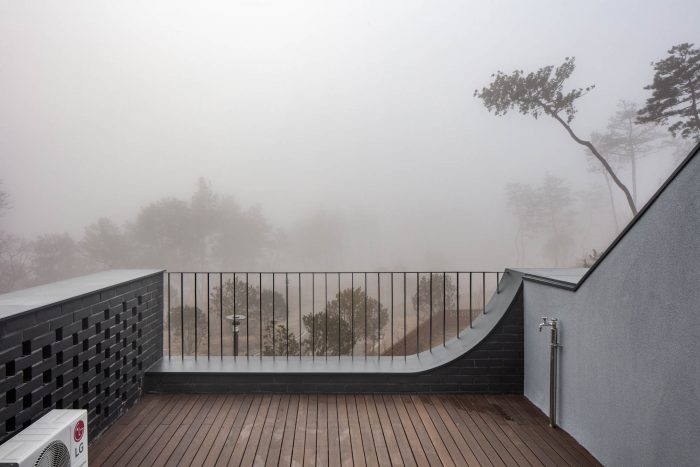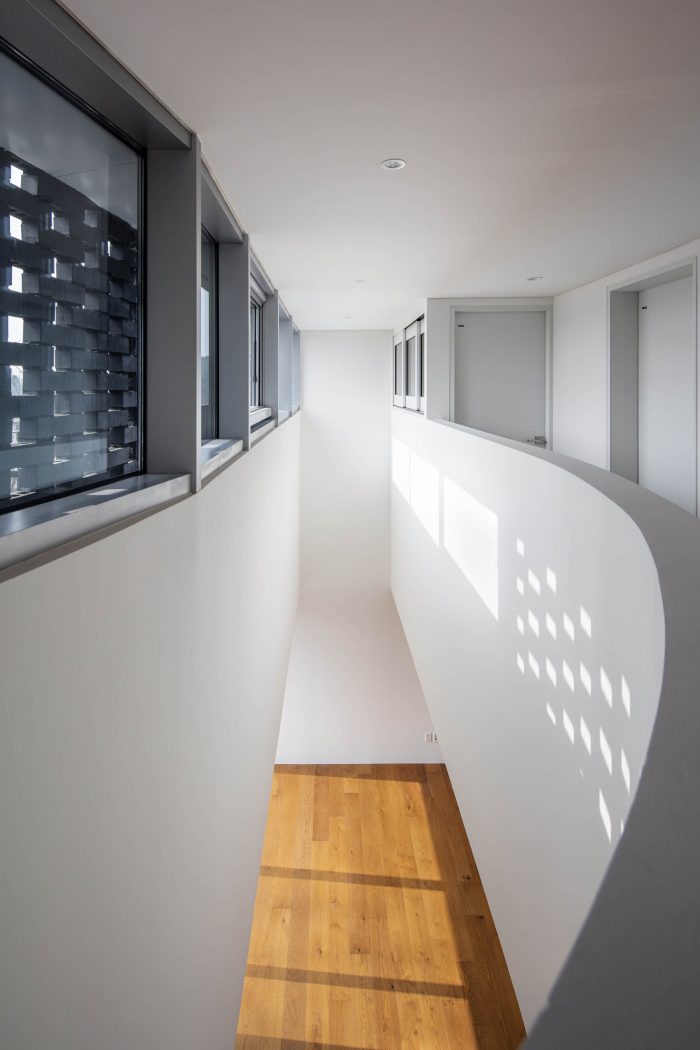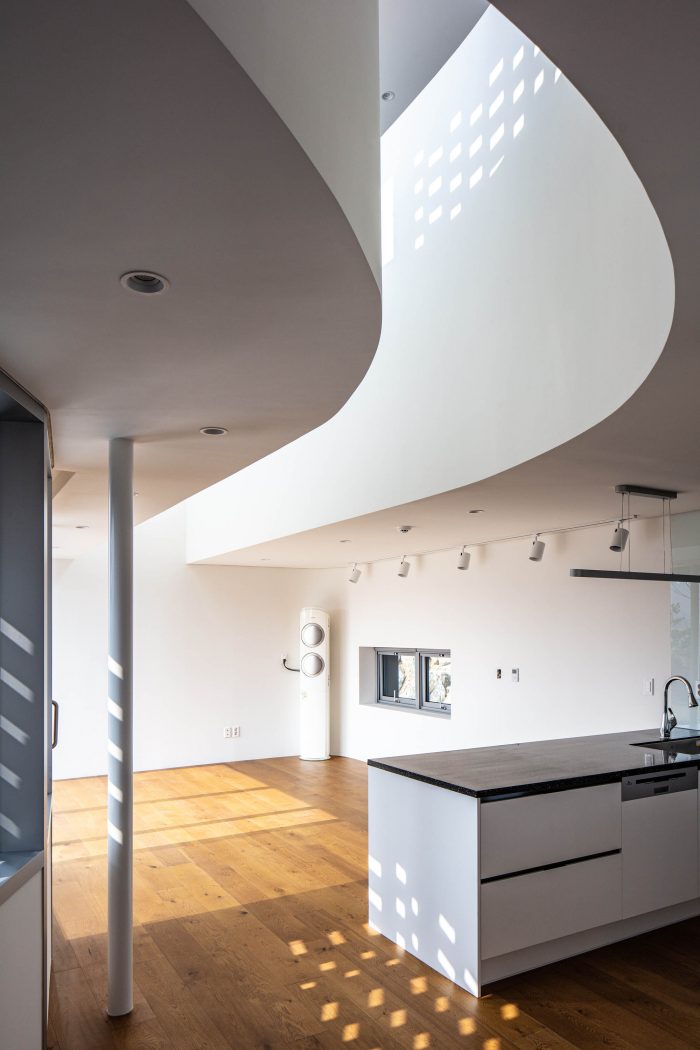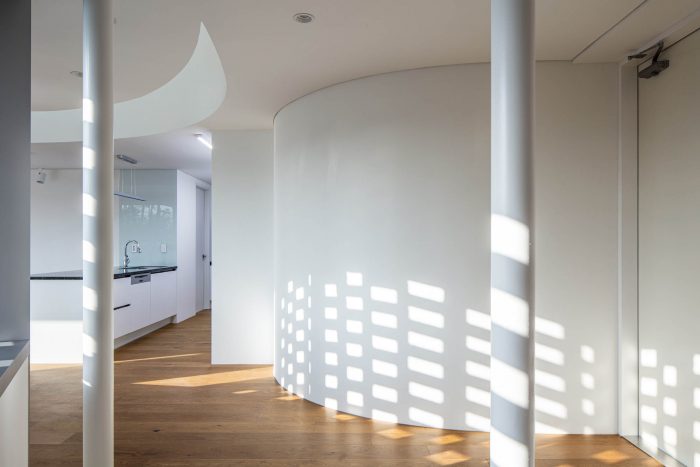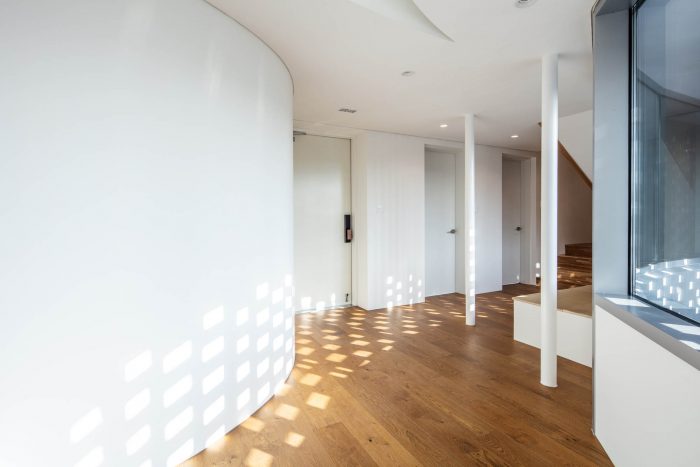这座房子位于世宗市的郊区,是韩国新规划的行政首都。客户是狂热的园艺家和业余树艺师,他们希望最大限度地提高房子的内部/外部连接。但是,由于他们一生中大部分时间都住在高层公寓楼里,他们非常关心如何保持与街道和邻居的隐私。因此,房子必须向花园的景观和远处雄伟的Gyeryong山脉开放,同时又要将房子遮挡在公众视野之外。
The house is located on the outskirts of Sejong City, the new planned administrative capital of South Korea. The clients were avid gardeners and amateur arborists who wanted to maximize the inside/outside connections of the house. But having lived in high-rise apartment complexes most of their lives, they were highly concerned with maintaining privacy from the street and its neighbors. Therefore it was important for the house to open up to the landscape of the garden and the majestic Gyeryong mountain ranges beyond, while still shrouding the house from public view.
该项目利用砖的转换质量,对街道和邻近的房屋创造了一个堡垒般的屏障,同时过渡到一个更多孔和开放的屏幕,允许扩展到亲密的和遥远的风景中。砖皮像一条分层的带子,从厚到薄,从不透明到透明,围绕着小房子包裹和延伸,以适应内部以及周围场地的程序性需求。
The project utilized the transformative quality of brick to create a fortress-like barrier toward the street and neighboring houses, while transitioning to a more porous and open screen that allowed expansion into the intimate as well as far away landscapes. The brick skin wraps and stretches around the small house like a stratified ribbon from thick to thin and opaque to transparent, adjusting to the programmatic demands within as well as from the surrounding site.
不透明的砖皮,带着最小的穿孔窗户,从东面的街道边和面对相邻房屋的北立面包裹着房子,同时逐渐向花园和西南角面向地平线的阳台完全开放。外立面的屋顶线也根据需要起伏,以满足场地和程序的要求。屋顶线在街道一侧的标高最高,以阻挡来自街道的屋顶光伏电池板的视线,而在北部则下降到最低点,以允许邻居家的视线走廊。房屋起伏的屋顶景观为杰龙山的地质背景提供了一个地形前景。
The opaque brick skin, with minimal punctured windows, wraps around the house from the street side on the east and the north elevation which faces the adjacent house, while gradually opening up fully into the garden and the horizon facing balconies at the south west corner. The roof line of the façade also undulates as needed to meet the site and programmatic demands. The roof line is at its highest elevation on the street side to block the view of the rooftop photovoltaic panels from street level, while dipping to its lowest point to the north to allow for the neighboring house’s view corridor. The undulating roofscape of the house provides a topographic foreground to the geological background of the Gyeryong Mountains beyond.
平面曲线对于解决几个设计难题至关重要。首先,客户希望房子有一个特定的布局,但由于他们试图将总建筑面积控制在既定的预算范围内,所以很难为该方案建立最小的流通空间。为了使所需的房间布局发挥作用,有必要引入弯曲的走廊,以足够的间隙连接各空间。
Planometric curves were vital in resolving several design challenges. First, the client wanted a specific layout for the house, but because they were trying to keep the total floor area within a set budget, it was difficult to establish the minimal circulation space for the program. In order for the desired room layouts to work, it was necessary to introduce curved corridors to connect the spaces with sufficient clearances.
第二,沿着狭长的北部挡土墙的弧形外墙为服务区的流通和采光提供了更多的空间,而南面渐变色砖墙的弧度则起到了遮阳避雨的作用,并通过其图案的阴影成为时间的标志。第三,弯曲的走廊的移动使得在楼层之间创造一个扩展的开口成为可能,以便在夏季进行自然的垂直空气流通,同时也在楼层之间创造一个连接,以方便交流。
Second, the curved outer walls along the tight northern retaining wall allowed more room for circulation and light to the service areas, while the curvature of the gradating scrim brick wall to the south function as a sun and rain screen as well as a marker of time through its patterned shadows. Third, the shifting of the curved corridors made it possible to create an extended opening between the floors for natural vertical air circulation during the summer as well as creating a connection between the floors for ease of communication.
Architects: Urban Terrains Lab,CIID
Area: 192 m²
Year: 2021
Photographs: Hyosook Chin
Project Team: Urban Terrains Lab : Yehre Suh, Changhun Lee, Haein Choi / CIID : Ikhyeon Ju
Manufacturers: Egon Window/Door Systems, Mora Ceramics, Terraco Stucco
Construction : Etern Development Company
Structural Engineer: SDM Structural Engineering
MEP Engineer: Sooyang MEP Engineering
Site Area: 746 m²
City:Sejong City
Country:South Korea

